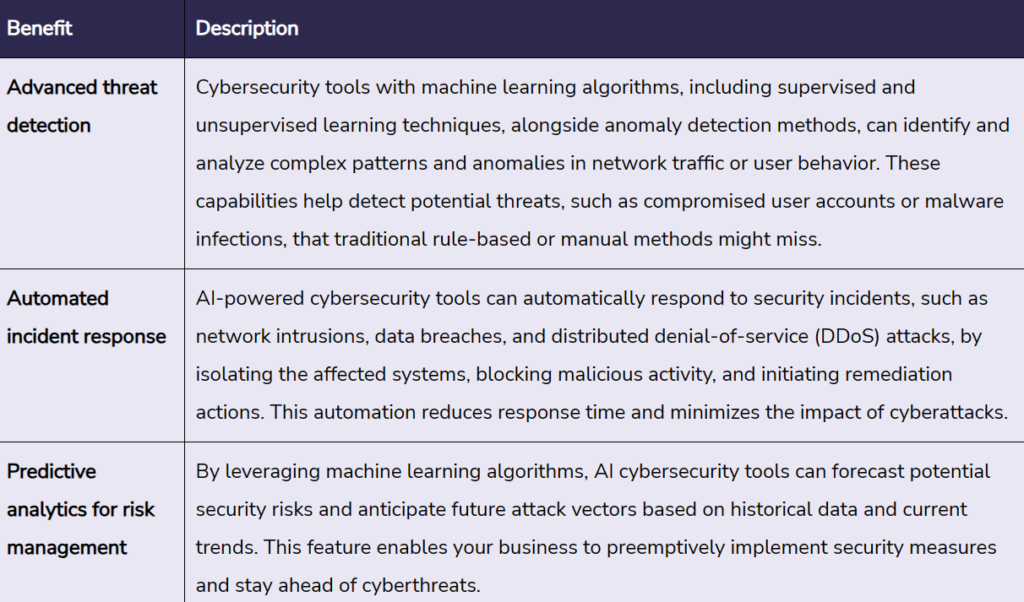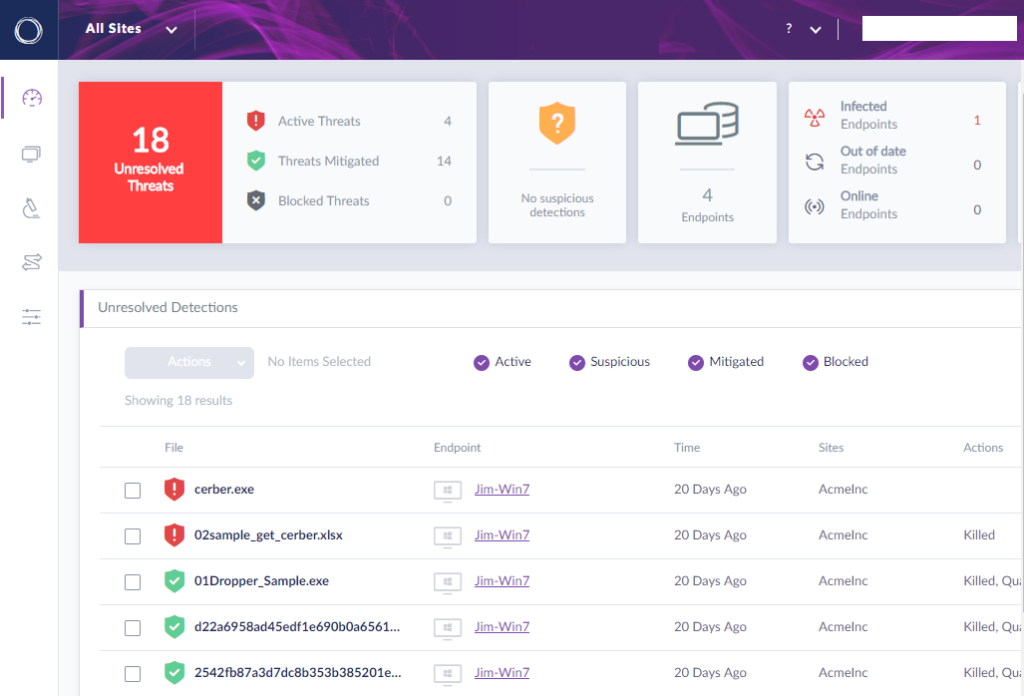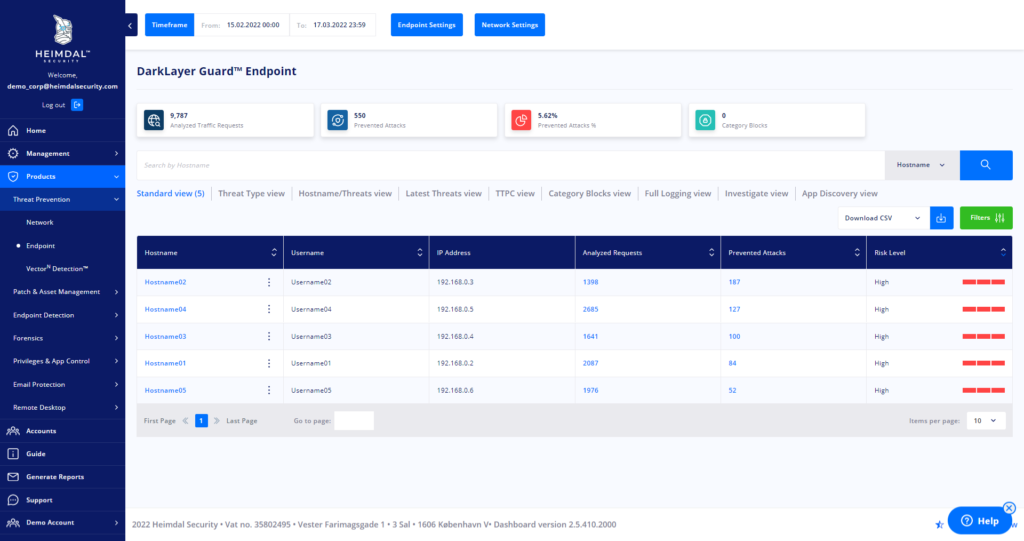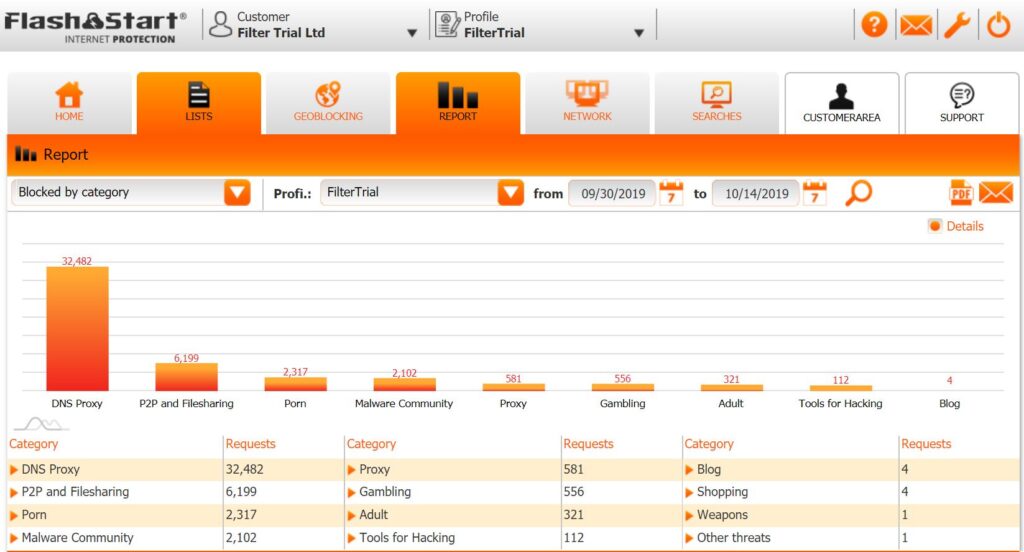The launch of OpenAI’s ChatGPT in November 2022 sparked discussions on AI’s role in cyber defense and attacks. Cybersecurity vendors responded by enhancing AI-driven products.
A Technavio report in March 2024 revealed a 19.5% growth in the AI-based cybersecurity market from 2022 to 2023, projected to reach $28.29bn by 2027. Additionally, an Infosecurity Europe 2024 survey showed that 54% of cybersecurity professionals aim to incorporate AI into their cybersecurity strategies within the next year.
As cyber threats evolve, businesses must stay ahead by adopting cutting-edge tools. Artificial intelligence (AI) is emerging as a powerful ally in the fight against cyberattacks. But how can you navigate this complex field and find the right AI cybersecurity tools? Let’s break it down in simple terms.
Why AI Matters in Cybersecurity
According to Hanah Darley, Director of Threat Research at AI cybersecurity firm Darktrace, “SOC teams need a growing arsenal of defensive AI to effectively protect an organization in the age of offensive AI.”
Indy Dhami, Financial Services Cyber Security Partner at KPMG UK, in an interview stated: “Generative AI can also be used to simulate cyber-attacks, helping security firms understand network components, vulnerabilities, and data flows, highlighting potential attack paths continuously to both protect and test system and data resilience,”
AI’s automated defense capabilities enable rapid analysis of vast amounts of data, identifying anomalies and threats, and providing proactive protection against cyber threats. Furthermore, AI can streamline routine tasks, ease the workload on security teams, and allow them to focus on critical issues. Through the analysis of historical data, AI offers predictive insights, forecasting potential future attacks and enhancing cybersecurity preparedness.

Credit: www.softwareadvice.com
Choosing the Right Tools
- Start by evaluating your organization’s specific security challenges and identify where AI can best support your defense strategies.
- Look for reputable vendors with proven expertise in AI cybersecurity. Take time to review feedback and recommendations.
- Prioritize user-friendly tools that align with your team’s proficiency level. Complexity shouldn’t stand in the way of effective usage.
- Verify seamless compatibility with your current systems. Avoid having cybersecurity solutions that don’t work harmoniously.
Top-Rated AI Cybersecurity Tools

Darktrace uses AI to detect unusual behavior across your network. It continuously monitors network traffic, identifies anomalies, and alerts security teams to potential threats.

This is a cloud-based solution that helps businesses of all sizes manage processes related to the entire threat lifecycle for providing endpoint security. With an integrated generative AI tool called Purple AI. You can enter commands in plain English, and Purple AI translates them into technical queries to search for endpoint, cloud environment, container, and IoT threats and prioritize them based on the severity level.

This is a cloud security solution that eliminates misconfigurations, vulnerabilities, and data security risks within your cloud environment. It uses generative AI to analyze the context of detected threats and vulnerabilities (e.g., affected resources, potential impact) and suggest appropriate remediation steps.

This is an advanced domain name system (DNS) security solution that adds hunting on top of traditional endpoint detection and response. It achieves this by filtering on both your endpoints and your network. It uses machine learning techniques, to analyze various data points, including domain names, domain registration details, historical data on similar domains, and language patterns used in domain names.

This is a global security service domain name system (DNS) filtering solution that uses machine learning models to analyze web traffic and domain data and classify it into various security categories (e.g., malware, phishing, gambling). This AI-powered tool automates response actions based on the nature of the detected threat.
Conclusion
AI offers enormous potential in cybersecurity both presently and in the future. As cybercriminals exploit AI to enhance the scale and sophistication of their attacks, it is even more essential that defenders harness AI for effective responses.





